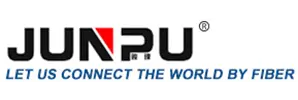
-
Home
-
Products
- Solution
- WHY JUNPU
- Services
- Resources
- News
- Contact Us

In the fast-paced evolution of urban living, the concept of a "smart city" has emerged as a beacon of efficiency, sustainability, and connectivity. At the heart of this urban transformation lie advanced technologies that enable seamless communication and data exchange. Outdoor fiber distribution boxes (OFDBs) play a pivotal role in enhancing urban infrastructure, facilitating the development of smarter networks that cater to the growing needs of modern cities.
Smart cities thrive on the exchange of data and information. Whether it's for businesses, residents, or public services, high-speed and reliable internet connectivity is fundamental. Outdoor fiber distribution boxes serve as the backbone of this connectivity, ensuring that urban dwellers have access to the internet speeds necessary for work, education, and entertainment.
Urban areas demand robust security and surveillance systems. Outdoor fiber distribution boxes support the deployment of advanced CCTV cameras and sensors, creating a networked environment that enhances public safety. Rapid data transmission facilitated by fiber optics enables real-time monitoring and quick response to potential security threats.
In the hustle and bustle of a city, efficient traffic management is crucial. Outdoor fiber distribution boxes play a pivotal role in fostering intelligent traffic systems, facilitating real-time data analysis to optimize traffic flow and alleviate congestion. These strategically placed distribution boxes serve as the backbone for a robust communication network, supporting the integration of sensors and monitoring devices across various infrastructure elements. By seamlessly connecting these components, the outdoor fiber distribution box enables proactive maintenance measures, ensuring timely interventions to minimize downtime and enhance overall system reliability.
Urban environments expose infrastructure to various weather conditions. OFDBs are designed to withstand the elements, ensuring uninterrupted connectivity even in adverse weather. Rain, snow, or extreme temperatures - these distribution boxes remain resilient, contributing to the reliability of the city's communication networks.
Smart cities are dynamic entities that continuously evolve. Outdoor fiber distribution boxes offer scalability, allowing for the easy integration of additional fiber optic lines and components as the city expands. This adaptability ensures that the network infrastructure can keep up with the growing demands of an ever-expanding urban landscape.
Deploying fiber optics underground can be costly and disruptive. Outdoor fiber distribution boxes provide a cost-effective alternative by enabling above-ground installations. This reduces the need for extensive digging and minimizes the overall cost of network deployment, making it a more economically viable solution for urban planners.
As urbanization continues to accelerate, the demand for smart city solutions will only intensify. Outdoor fiber distribution boxes are set to play an increasingly vital role in shaping the future of urban connectivity. From supporting advanced communication networks to enhancing public services, these boxes represent a cornerstone of modern urban infrastructure. As we navigate the path towards smarter cities, the role of OFDBs will remain pivotal in creating a more connected, efficient, and sustainable urban experience for all.
 Call us on:
Call us on:  Email Us:
Email Us:  Wanhua Science and Technology Park, No. 528, Shunfeng Road, Donghu Street, Linping District, Hangzhou City, Zhejiang Province
Wanhua Science and Technology Park, No. 528, Shunfeng Road, Donghu Street, Linping District, Hangzhou City, Zhejiang Province